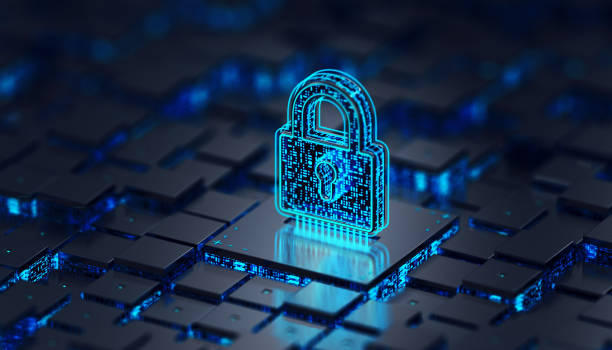Defense Mechanisms Against Cyber Threats
Understanding the vast array of cyber threats is merely the first step toward securing sensitive information and maintaining digital safety. Effective defense mechanisms are essential to safeguard against these threats. Here are some critical strategies and best practices that individuals and organizations can implement to bolster their cybersecurity posture:
Implement Multi-Factor Authentication (MFA)
Multi-factor authentication adds an additional layer of security beyond just a username and password. By requiring multiple forms of verification such as a text message code or biometric authentication, MFA significantly reduces the risk of unauthorized access.
Regular Software Updates
Keeping software and systems up to date is crucial for protecting against newly discovered vulnerabilities. Regularly applying patches and updates ensures that all known security holes are plugged, preventing attackers from exploiting outdated software.
Educate and Train Employees
Human error is often the weakest link in cybersecurity defenses. Comprehensive training programs that educate employees about recognizing phishing attacks, securing sensitive information, and adhering to security protocols can mitigate risks significantly.
Advanced Endpoint Protection
Deploying advanced endpoint protection tools can identify and neutralize threats before they can cause harm. Solutions like antivirus software, Endpoint Detection and Response (EDR) platforms, and firewalls create a robust barrier against malware and unauthorized access.
Data Encryption
Encrypting sensitive data minimizes the damage in case of a security breach. Using encryption for both data at rest and data in transit ensures that intercepted information is unreadable to unauthorized parties.
Regular Backups
Ransomware attacks underline the importance of maintaining regular backups of critical data. Organizations should implement a rigorous backup strategy that includes frequent backups and secure, off-site storage. Regularly testing backup restoration can ensure data integrity and quick recovery in the event of an attack.
Incident Response Plan
Having a comprehensive incident response plan allows organizations to act quickly and effectively in the event of a cyber attack. This plan should outline the procedures for detecting, containing, eradicating, and recovering from security incidents, as well as clear communication protocols.
Continuous Monitoring and Threat Hunting
Continuous monitoring of network traffic, user activity, and system behavior helps in early detection of threats. Threat hunting involves proactively searching for threats that have evaded existing security solutions, thereby uncovering hidden malicious activity.
Secure Supply Chain Management
Given the increasing prevalence of supply chain attacks, it’s vital for organizations to enforce strict security measures for their supply chain. This includes vetting the security practices of third-party vendors, ensuring that software from suppliers is thoroughly tested, and maintaining strict control over code signing procedures.
Holistic Approach to Cybersecurity
Cybersecurity is not solely the responsibility of the IT department; it requires a holistic approach that involves everyone within an organization. By fostering a culture of security awareness, staying informed about the latest cyber threats, and continually adapting defense mechanisms, both individuals and organizations can significantly mitigate their exposure to cyber risks. By taking these actions, they will be better prepared to face the evolving landscape of cyber threats head-on.
Importance of Cybersecurity Audits
Regular cybersecurity audits are crucial for assessing the effectiveness of existing security measures and identifying areas that require improvement. These audits involve a comprehensive review of an organization’s IT infrastructure, policies, and procedures to ensure compliance with industry standards and regulations.
Identifying Vulnerabilities
Cybersecurity audits help in pinpointing vulnerabilities within an organization’s systems, networks, and applications. By identifying these weaknesses, organizations can implement targeted measures to mitigate potential risks and fortify their defenses against cyber threats.
Ensuring Compliance
Compliance with regulatory requirements and industry standards such as the General Data Protection Regulation (GDPR), the Health Insurance Portability and Accountability Act (HIPAA), and the Payment Card Industry Data Security Standard (PCI DSS) is essential for avoiding legal penalties and maintaining customer trust. Regular audits ensure that an organization adheres to these regulations and adopts best practices for data protection.
Audits also evaluate the effectiveness of an organization’s incident response plan. By reviewing past incidents and testing the response procedures, organizations can refine their strategies, improve coordination among teams, and ensure a quicker and more effective response to future cyber attacks.
Improving Security Awareness
Conducting regular audits promotes a culture of continuous improvement and security awareness within an organization. By involving employees in the audit process and educating them about security protocols and practices, organizations can empower their workforce to be proactive in identifying and mitigating cyber risks.
The Role of Emerging Technologies in Cybersecurity
Emerging technologies such as artificial intelligence (AI), machine learning (ML), and blockchain are transforming the landscape of cybersecurity. These technologies offer innovative solutions for enhancing security measures and addressing complex cyber threats.
Artificial Intelligence and Machine Learning
AI and ML can analyze vast amounts of data to detect patterns and anomalies that may indicate malicious activity. By leveraging these technologies, organizations can improve threat detection, automate responses to security incidents, and predict potential cyber attacks before they occur.
Blockchain Technology
Blockchain offers a decentralized and tamper-proof ledger system that can enhance data integrity and security. By implementing blockchain solutions, organizations can reduce the risk of data breaches, ensure secure transactions, and maintain transparent and immutable records.
Internet of Things (IoT) Security
The proliferation of IoT devices introduces new challenges for cybersecurity. Securing these devices requires robust authentication mechanisms, encryption protocols, and regular firmware updates to prevent unauthorized access and data breaches.
Quantum Computing and Cybersecurity
Quantum computing, with its immense computational power, poses both opportunities and challenges for cybersecurity. On one hand, quantum computers have the potential to revolutionize cryptographic methods, creating virtually unbreakable encryption techniques. On the other hand, they also threaten to render current encryption algorithms obsolete, leaving sensitive data vulnerable to decryption.
Quantum-Resistant Cryptography
To prepare for the advancements in quantum computing, cybersecurity experts are developing quantum-resistant cryptographic algorithms. These algorithms are designed to withstand the processing power of quantum computers, ensuring that data remains secure even as quantum technology evolves. Adopting these new standards will be crucial for future-proofing encryption and protecting critical information.
Secure Quantum Communication
Quantum key distribution (QKD) is an emerging technology that leverages the principles of quantum mechanics to create secure communication channels. QKD enables the exchange of cryptographic keys with a level of security that classical methods cannot achieve, as any attempt to eavesdrop on the key exchange would be immediately detectable. This technology holds promise for ultra-secure communication networks, essential for protecting sensitive government, financial, and personal data.
Biometric Security
Biometric security measures, such as fingerprint scanning, facial recognition, and iris scanning, offer a more reliable means of user authentication compared to traditional passwords. By utilizing unique physiological characteristics, biometric systems can significantly enhance security measures, making it more difficult for unauthorized individuals to gain access to protected resources.
Multi-Factor Authentication
Incorporating biometric security into multi-factor authentication (MFA) systems provides an additional layer of protection. MFA requires users to present two or more verification factors—such as something they know (password), something they have (security token), and something they are (biometric data)—before granting access. This approach mitigates the risk of security breaches caused by compromised passwords.
The Future of Cybersecurity
As cyber threats continue to evolve, so must the strategies and technologies used to combat them. Staying ahead in the cybersecurity race requires continuous innovation, collaboration, and education. Future trends in cybersecurity are likely to involve a blend of advanced technologies, enhanced security policies, and greater cooperation among organizations and governments.
Cybersecurity Education and Training
Investing in the education and training of cybersecurity professionals is paramount to building a robust defense against cyber threats. By cultivating a workforce skilled in the latest security techniques and threat mitigation strategies, organizations can better protect themselves and their stakeholders from cyber attacks.
Public-Private Partnerships
Collaboration between the public and private sectors is essential for a coordinated approach to cybersecurity. Sharing threat intelligence, best practices, and resources can help create stronger defenses and more effective responses to cyber incidents on a global scale.
By adopting these forward-thinking approaches, embracing emerging technologies, and fostering a culture of continuous improvement, the landscape of cybersecurity can be fortified against both current and future threats.
The Importance of Cyber Hygiene
Cyber hygiene refers to the practices and steps that individuals and organizations take to maintain system health and improve online security. Like personal hygiene, which involves routine habits to prevent illness and promote physical well-being, cyber hygiene encompasses regular activities and habits to protect digital systems from threats and vulnerabilities.
Best Practices for Cyber Hygiene
- Regular Software Updates: Ensuring that all systems, software, and applications are up-to-date is crucial for patching known vulnerabilities. Automated update systems can assist in keeping everything current without requiring continual manual intervention.
- Strong Password Management: Utilizing strong, unique passwords for different accounts, and changing them periodically, helps to prevent unauthorized access. Password managers can assist with generating and storing complex passwords securely.
- Backup Data Regularly: Regularly backing up data ensures that information can be recovered in the event of a malware attack, system failure, or other data loss incidents. Both on-site and off-site backups provide a safety net for critical data.
- Network Security Practices: Implementing firewalls, antivirus, and anti-malware software helps protect against various types of cyber threats. Regularly monitoring network traffic can also help detect unusual activities that may indicate a security breach.
- User Education and Awareness: Empowering employees and users with knowledge about phishing scams, social engineering attacks, and safe online practices is a fundamental aspect of maintaining robust cybersecurity. Regular training sessions can help keep everyone informed about the latest threats and prevention techniques.
The Role of Policy and Regulation in Cybersecurity
Governments and regulatory bodies play a pivotal role in establishing frameworks and guidelines that ensure a baseline level of cybersecurity across industries. Compliance with these regulations helps to safeguard sensitive information and maintain trust.
Notable Cybersecurity Regulations
- GDPR (General Data Protection Regulation): Enacted by the European Union, GDPR mandates strict data protection measures for organizations handling personal data, focusing on user consent, data protection, and breach notification.
- HIPAA (Health Insurance Portability and Accountability Act): In the United States, HIPAA sets national standards for protecting sensitive patient information, requiring healthcare providers and their business associates to implement comprehensive security measures.
- NIST (National Institute of Standards and Technology) Cybersecurity Framework: The NIST framework provides guidelines and best practices for improving critical infrastructure cybersecurity, aiding organizations in identifying, detecting, and responding to cyber threats effectively.
Conclusion
In an era where cyber threats are constantly evolving, a proactive and comprehensive approach to cybersecurity is indispensable. Organizations must stay vigilant, continuously improve their defense mechanisms, and leverage emerging technologies to protect sensitive information and maintain digital safety. Through regular audits, employee education, and the adoption of advanced security solutions, organizations can build a resilient cybersecurity framework that stands strong against the ever-changing threat landscape.









